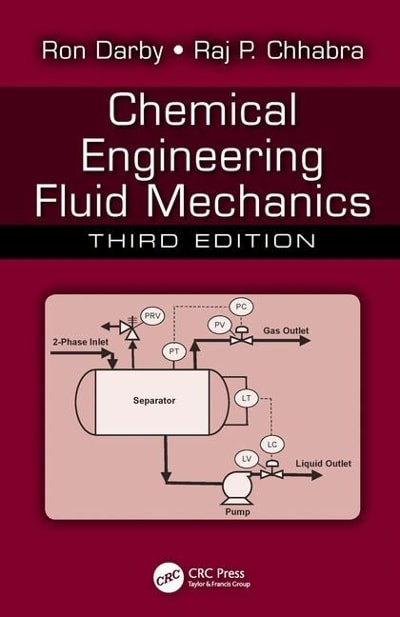A slider bearing consists of a sleeve surrounding a cylindrical shaft that is free to move axially
Question:
A slider bearing consists of a sleeve surrounding a cylindrical shaft that is free to move axially within the sleeve. A lubricant (e.g., grease) is in the gap between the shaft and the sleeve to isolate the metal surfaces and support the stress resulting from the motion of the shaft. The diameter of the shaft is $1 \mathrm{in}$. and the inside diameter of the sleeve is $1.02 \mathrm{in}$., and its length is $2 \mathrm{in}$.
(a) If you want to limit the total force on the sleeve to less than $0.5 \mathrm{lb}_{\mathrm{f}}$ when the shaft is moving with a velocity of $20 \mathrm{ft} / \mathrm{s}$, what should the viscosity of the grease be, in centipoise?
(b) If the grease has a viscosity of $400 \mathrm{cP}$ (centipoise), what is the force exerted on the sleeve when the shaft is moving at a velocity of $20 \mathrm{ft} / \mathrm{s}$ ?(c) The sleeve is cooled to a temperature of $150^{\circ} \mathrm{F}$, and it is desired to keep the shaft temperature below $200^{\circ} \mathrm{F}$. What is the cooling rate (i.e., the rate at which heat must be removed through the sleeve by the coolant, in Btu/h), to achieve this temperature? The properties of the grease are as follows: specific heat $=0.5 \mathrm{Btu} / \mathrm{lb}_{\mathrm{m}}{ }^{\circ} \mathrm{F}$, specific gravity $(\mathrm{SG})=0.85$, thermal conductivity $=0.06 \mathrm{Btu} / \mathrm{h} \mathrm{ft}{ }^{\circ} \mathrm{F}$.
(d) If the grease becomes contaminated, it could be corrosive to the shaft metal. Assume that this occurs and the surface of the shaft starts to corrode at a rate of $0.1 \mu \mathrm{m} / \mathrm{year}$. If this corrosion rate is constant, determine the maximum concentration of metal ions in the grease when the ions from the shaft just reach the sleeve. The properties of the shaft metal are as follows: molecular weight $(\mathrm{MW})=65, \mathrm{SG}=8.5$, diffusivity of metal ions in grease $=$ $8.5 \times 10^{-5} \mathrm{~cm}^{2} / \mathrm{s}$.
Step by Step Answer:

Chemical Engineering Fluid Mechanics
ISBN: 9781498724432
3rd Edition
Authors: Ron Darby, Raj P Chhabra





